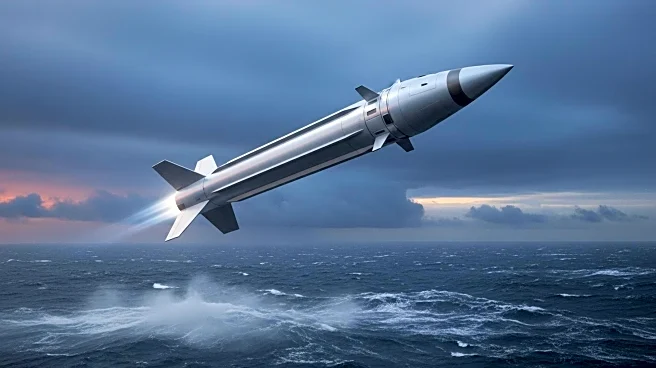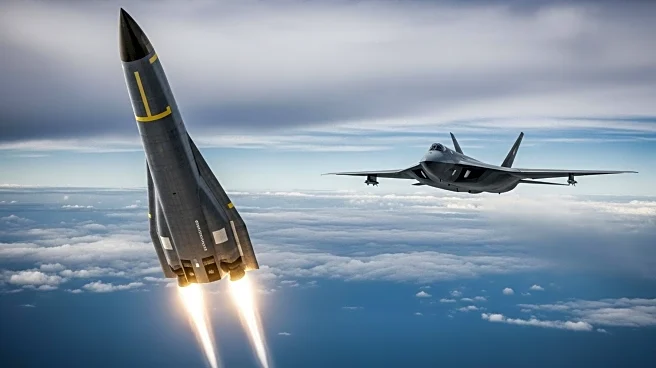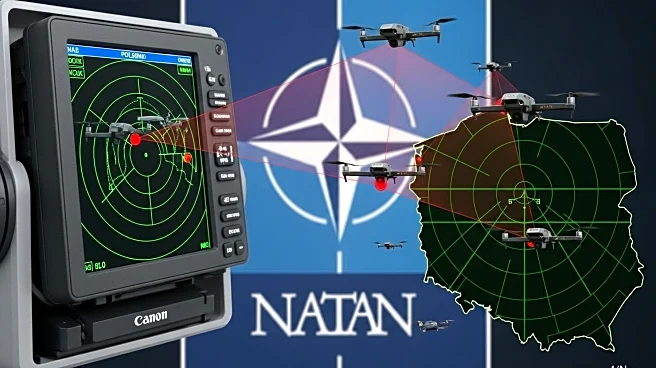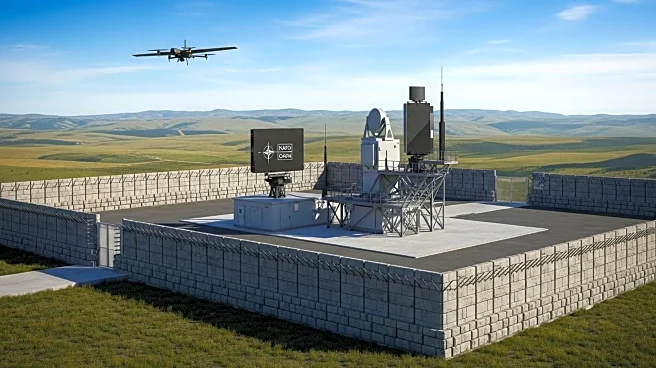What's Happening?
The U.S. Air Force, in collaboration with the Royal Norwegian Air Force, conducted a test of its new anti-ship bomb, Quicksink, in the Norwegian Sea. The bomb is designed to follow a ship's movements and detonate at a preset depth, mimicking the destructive power of a torpedo but at a lower cost. The test involved a B-2 bomber from Whiteman AFB, Missouri, and was supported by Norwegian F-35 fighters and a P-8A Poseidon maritime search aircraft. The exercise comes amid rising tensions between Russia and NATO, with concerns over Russian vessels' activities near critical subsea infrastructure.
Why It's Important?
The successful test of the Quicksink bomb represents a significant advancement in the U.S. military's maritime capabilities, offering a cost-effective solution for neutralizing small vessel threats. This development is particularly relevant given the strategic importance of protecting subsea pipelines and other critical infrastructure in Northern Europe. The test underscores the U.S. commitment to strengthening its defense posture in collaboration with NATO allies, amidst growing concerns over Russian maritime activities.
What's Next?
The U.S. Air Force is likely to continue refining the Quicksink technology, potentially expanding its deployment to other regions of strategic interest. The development of a smaller, 500-pound version of the bomb could further enhance its utility against a wider range of maritime threats. As tensions with Russia persist, NATO allies may increase joint military exercises and enhance surveillance of Russian vessels to deter potential threats to critical infrastructure.
Beyond the Headlines
The deployment of advanced military technologies like Quicksink raises ethical and strategic questions about the escalation of military capabilities in sensitive regions. The potential for these technologies to be used in conflict scenarios necessitates careful consideration of their implications for international security and stability. Additionally, the collaboration between the U.S. and its allies highlights the importance of maintaining strong defense partnerships in the face of evolving global threats.












